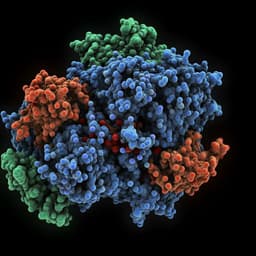
Biology
A genetically encoded BRET-based SARS-CoV-2 Mpro protease activity sensor
A. M. Geethakumari, W. S. Ahmed, et al.
Discover groundbreaking insights into SARS-CoV-2's main protease (Mpro) with innovative BRET-based sensors developed by Anupriya M. Geethakumari, Wesam S. Ahmed, Saad Rasool, Asma Fatima, S. M. Nasir Uddin, Mustapha Aouida, and Kabir H. Biswas. These sensors allow for real-time detection of Mpro activity, offering valuable tools for drug discovery and functional genomics in the battle against COVID-19.
Playback language: English
Related Publications
Explore these studies to deepen your understanding of the subject.







